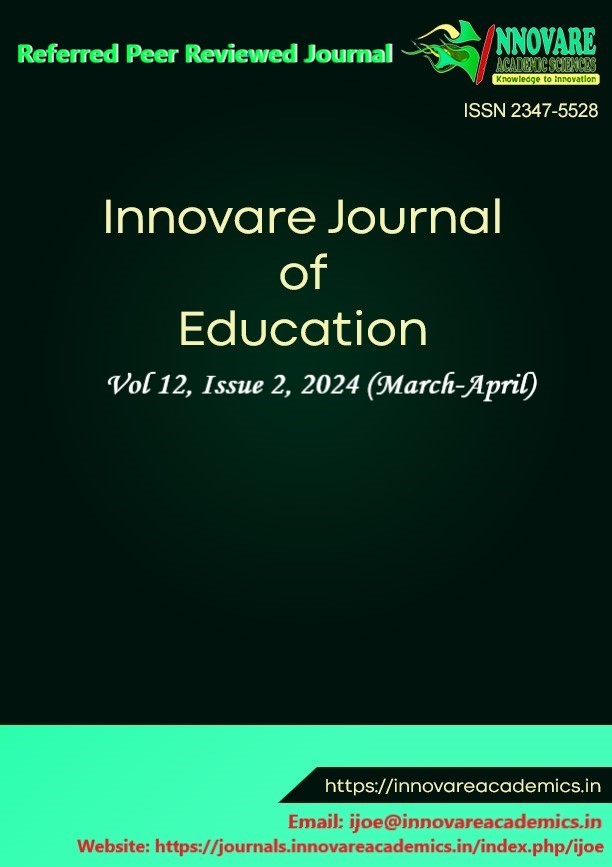Comparing the Use of Linguistic Hedging Devices (LHDs) in English and Bahasa Indonesia: Gender and Pedagogical Perspectives
DOI:
https://doi.org/10.22159/ijoe.2024v12i2.49786Keywords:
English, Bahasa Indonesia, EFL learners, linguistic hedging devices, fillers, cross-cultural pragmatics, spoken interactionAbstract
The use of Linguistics Hedging Devices (LHDs) serves a notable function in our daily conversations and thus is thought-provoking to analyze. Although its occurrence tends to be more prominent in spoken communications, the use of this linguistic feature is still frequently apparent in written conversations. Although they do not add much to the proportional content of an utterance, their occurrence remains unique in terms of variations, frequency, and functions across languages. This study examines the use of LHDs by native speakers of English and Bahasa Indonesia in short spontaneous expressions. The data were obtained through Oral Discourse Completion Tasks (ODCTs) involving 40 participants from the two language speakers (20 in English and 20 in Bahasa Indonesia). English respondents expressed their responses in English, while the Indonesian speakers used Bahasa Indonesia in their responses. Each respondent was asked to respond to an apologetic expression from a close friend using a mini-digital tape recording. All responses were transcribed and analyzed, focusing on the number and types of LHDs used by the respondents in their expressions. The results revealed that the two language communities used various LHDs in their responses, mostly intended to show indirectness and reduce threats toward the hearers’ negative faces. English respondents were likely to use these linguistic features more frequently and varied in types than their Indonesian counterparts. A remarkable trend in the study is that Indonesian speakers tended to be more direct in their expressions than their English counterparts, challenging previously reversed claims. Teaching English as a Foreign Language in Indonesia is recommended to introduce various types and uses of these markers and emphasize how they can be used appropriately in authentic contexts.
Downloads
References
Adrefiza, & Jones, J. F. (2013). Investigating apology response strategies in Australian English and Bahasa Indonesia: Gender and cultural perspectives. Australian Review of Applied Linguistics, 36(1), 71–101. https://doi.org/10.1075/aral.36.1.04jon
Bardovi-Harlig, K. (1999). Exploring the interlanguage of interlanguage pragmatics: A research agenda for acquisitional pragmatics. Language Learning, 49(4), 677–713. https://doi.org/10.1111/0023-8333.00105
Bataineh, R. F., & Bataineh, R. F. (2008). A cross-cultural comparison of apologies by native speakers of American English and Jordanian Arabic. Journal of Pragmatics, 40(4), 792–821. https://doi.org/10.1016/j.pragma.2008.01.003
Blum-kulka, S., & Olshtain, E. (1984). Requests and apologies: A cross-cultural study of speech act realization patterns (CCSARP. Applied Linguistics, 5(3), 196–213. https://doi.org/10.1093/applin/5.3.196
Brown, P., & Levinson, S. (1987). Politeness: Some universals in language usage. Cambridge University Press.
Coates, J. (2013). Women, men, and language (3rd ed.). Routledge.
Creswell, J. W., Creswell, J., & David. (2018). Research design: Qualitative, quantitative, and mixed methods approaches (5th ed.). SAGE Publication.
Crossman, A. (2020). Understanding purposive sampling. An overview of the methods and its applications. https://www.thoughtco.com/purposive-sampling-3026727
Fitriah, F., & Muna, H. (2019). Foreign language speaking anxiety: A case study at English department students of IAIN Lhokseumawe and Al Muslim University. Jurnal Ilmiah Didaktika, 19(2), 140-148.
Hardiyanty, Y. Y., Supiani, S., & Perdana, I. (2021). Learning to teach. PIONEER, 13(2), 197–212. https://doi.org/10.36841/pioneer.v13i2.1232
Hoff, E., Core, C., & Shanks, K. F. (2020). The quality of child-directed speech depends on the speaker’s language proficiency. Journal of Child Language, 47(1), 132–145. https://doi.org/10.1017/S030500091900028X
Holmes, J. (1986). Functions of you know in women’s and men’s speech. Language in Society, 15(1), 1–21. https://doi.org/10.1017/S0047404500011623.
Holmes, J. (1995). Women, men and politeness. Longman. https://doi.org/10.2307/416031
Holmes, J. (2006). Gendered talk at work: Constructing social identity through workplace interaction. Blackwell Publishing.
Holmes, J. (2008). An introduction to sociolinguistics. Longman.
Jones, J. F., & Adrefiza. (2017). Comparing apologies in Australian English and Bahasa Indonesia: Cultural and gender perspectives. Journal of Politeness Research, 13(1), 89–119. https://doi.org/10.1515/pr-2016-0033
Kurdghelashvili, T. (2015). Speech acts and politeness strategies in an EFL classroom in Georgia. World Academy of Science, Engineering and Technology International Journal of Cognitive and Language Sciences, 9(1), 306–309.
Lakoff, R. T. (2004). Language and woman’s place: Text and commentaries. Oxford University Press
Lakoff, R. (1973). Language and woman’s place. Language in Society, 2(1), 45–79. https://doi.org/10.1017/S0047404500000051
Laksana, I. K. D. (2021). Discourse of Indonesian language in public domain: Its use in public debate prior to the presidential election 2019. Linguistics and Culture Review, 5(S1)(Suppl. 1), 922–934. https://doi.org/10.21744/lingcure.v5nS1.1477
Miles, M. B., Huberman, A. M., & Saldaña, J. (2018). Qualitative data analysis: A methods sourcebook (4th ed.). SAGE Publication.
Mills, S. (2003). Gender and politeness. Cambridge University Press.
Nureddeen, F. A. (2008). Cross cultural pragmatics: Apology strategies in Sudanese Arabic. Journal of Pragmatics, 40(2), 279–306. https://doi.org/10.1016/j.pragma.2007.11.001
Oishi, E. (2020). Discourse markers as indicators of connectedness between expositive illocutionary acts. Pragmatics and Society, 11(1), 1–23. https://doi.org/10.1075/ps.17028.ois
Palys, T. (2008). Purposive sampling. In L. M. Given (Ed.), The sage encyclopedia of qualitative research methods, 2 (pp. 697–698). SAGE Publication.
Wouk, F. (1999). Gender and the use of pragmatic particles in Indonesian. Journal of Sociolinguistics, 3(2), 194–219. https://doi.org/10.1111/1467-9481.00072
Wouk, F. (2001). Solidarity in Indonesian conversation: The discourse marker ya. Journal of Pragmatics, 33(2), 171–191. https://doi.org/10.1016/S0378-2166(99)00139-3
Wouk, F. (2006). Strategies of apologizing in Lombok Indonesia. Journal of Politeness Research. Language, Behaviour, Culture, 2(2), 277–311. https://doi.org/10.1515/PR.2006.014
Yuan, Y. (2001). An inquiry into empirical pragmatics data-gathering methods: Written DCTs, oral DCTs, field notes, and natural conversations. Journal of Pragmatics, 33(2), 271–292. https://doi.org/10.1016/S0378-2166(00)00031-X
Published
How to Cite
Issue
Section
Copyright (c) 2024 Adrefiza Adrefiza

This work is licensed under a Creative Commons Attribution 4.0 International License.





